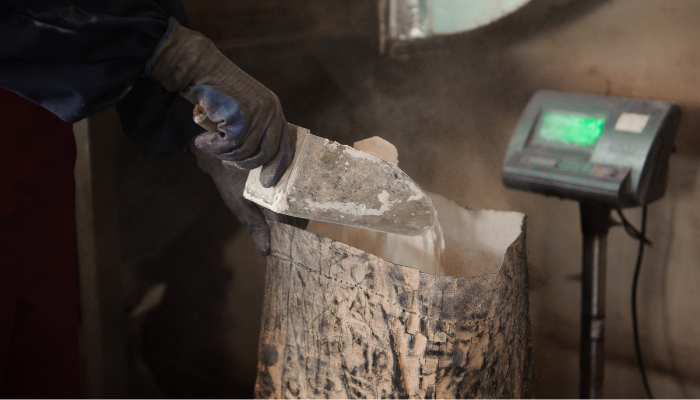When conducting a stock take by weight, you need a few essential items and follow certain steps to ensure you have an accurate count. Remember, the procedures and tools used for weighing stock may vary depending on the nature of your business and the items being weighed. It’s important to establish clear guidelines and ensure consistency throughout the stock take process to achieve accurate results. Here are some tips on undertaking a weight-based stock take.
Use the right equipment
If you decide to do your stock take by weight, make sure you have the right scales for the type of stock you’re weighing. For small items, a digital scale is often sufficient, while larger items may require platform scale or scales integrated into your forklift. Often digital scales can be connected to your Enterprise Resource Planning (ERP) system, so there’s no errors with data input.
It’s a good idea to use labels to attach to an item after it has been weighed. The label should include a barcode as a unique identifier. If your products already have barcodes, make sure your ERP is set up to input extra data, such as a field for weight, and how the weight translates into stock numbers.
A barcode scanner or integrated mobile device will also speed up your stock take process and updates the data in real-time to your ERP.
Get organised
Before you start any stock take, it’s important to have a clear space to work with your stock. In addition, a level floor or table ensures you’ll get accurate weights and avoids reweighing your inventory.
Plan out your stock take and group similar items together. This will streamline and speed up the weighing and stock take process.
Start the weigh-in
Choose a logical starting point in your warehouse to begin the stock take by weight. This could be a particular section or specific item type. Make sure each item on the weighing scale is in a stable and balanced position. If your ERP is connected directly to the scales, the weight will be automatically recorded.
Moving through your inventory requires concentration and a systematic approach to avoid double handling and confusion. Work through your stock, section by section, until all items have been weighed and documented. Make sure staff take short breaks to maintain focus, accuracy and to avoid any workplace injuries.
Review and reconcile
At the end of your weight-based stock take it is always a good idea to cross-check your ERP records with your inventory to ensure all the stock was weighed and accounted for. Comparing the weighed stock with your existing inventory records can help identify any discrepancies that may require further investigation.
How can Acacia help?
Successful inventory management and stock takes are an essential part of any manufacturing and distribution business. It helps reduce stock costs and enables your business to give clients the products they want, when they need them.
At Acacia, we are an MYOB Advanced Platinum Partner and industry leader in helping manufacturers and distributors overcome issues, rebound and become more profitable. We help optimise, automate and improve the traceability of your business. We have the knowledge and experience across many industries to provide the most cost-effective solution for your business. Please contact us to find out more.


